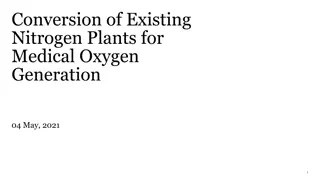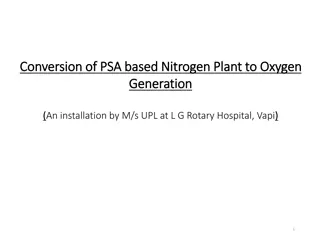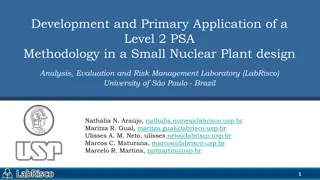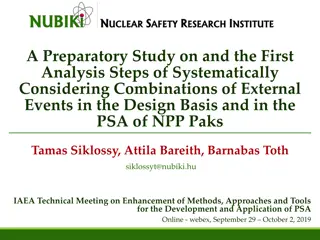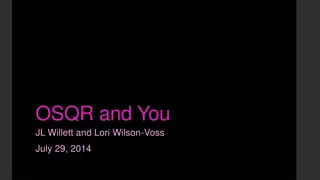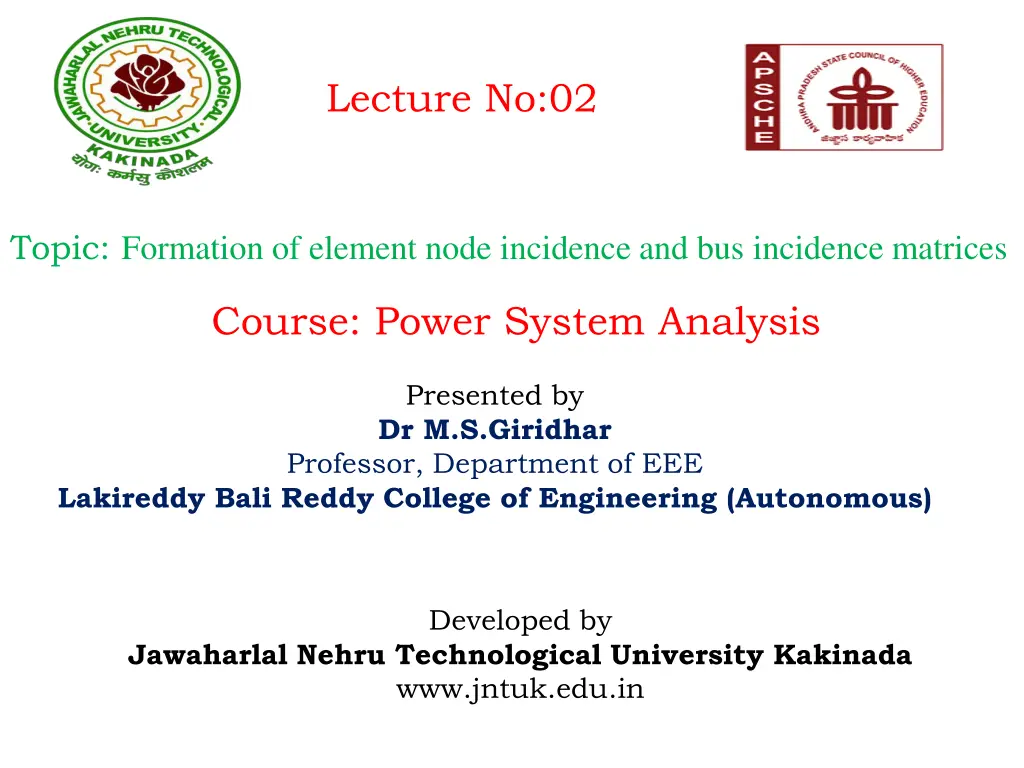
Power System Network Analysis: Formation Matrices & Bus Admittance
Explore the formation of element-node and bus incidence matrices in power system analysis, including the creation of Ybus matrix via singular transformation. Understand Kirchoff's current law and primitive network concepts.
Download Presentation

Please find below an Image/Link to download the presentation.
The content on the website is provided AS IS for your information and personal use only. It may not be sold, licensed, or shared on other websites without obtaining consent from the author. If you encounter any issues during the download, it is possible that the publisher has removed the file from their server.
You are allowed to download the files provided on this website for personal or commercial use, subject to the condition that they are used lawfully. All files are the property of their respective owners.
The content on the website is provided AS IS for your information and personal use only. It may not be sold, licensed, or shared on other websites without obtaining consent from the author.
E N D
Presentation Transcript
Lecture No:02 Topic: Formation of element node incidence and bus incidence matrices Course: Power System Analysis Presented by Dr M.S.Giridhar Professor, Department of EEE Lakireddy Bali Reddy College of Engineering (Autonomous) Developed by Jawaharlal Nehru Technological University Kakinada www.jntuk.edu.in
POWER SYSTEM NETWORK INCIDANCE MATRICES ELEMENT-NODE INCIDANCE MATRIX [A] The incidence of elements to nodes in a connected graph is shown by element-node incidence matrix aij = 1 if the ith element is incident to and oriented away form jth node. aij = -1 if the ith element is incident to and oriented towards jth node. aij = 0 if the ith element is not incident to jth node.
GRAPH OF A GIVEN POWER SYSTEM NETWORK 7 A 6 B 5 C D 4 2 1 3 1
7 A 6 B 5 C D 4 2 1 3 1 Node Element A B 1 C D 1 2 3 4 5 6 7 1 1 1 0 0 0 0 -1 0 0 0 0 1 0 0 -1 0 0 1 -1 1 0 0 0 -1 -1 0 0 0 0 -1 1 0 0 -1 Since the sum of elements in a row are zero, the columns of A are linearly dependent. Hence the rank of A < n.
Topic: Formation of Ybus Matrix by Singular Transformation Course: Power System Analysis Presented by Dr M.S.Giridhar Professor, Department of EEE Lakireddy Bali Reddy College of Engineering (Autonomous) Developed by Jawaharlal Nehru Technological University Kakinada www.jntuk.edu.in
Primitive Network: A set of unconnected elements is defined as a primitive network. jpq Eq Ep Zpq p q epq Ep Eq Ypq ipq q p ipq + jpq vpq = Ep Eq vpq = Ep Eq Performance equation is vpq + epq = Zpqipq Performance equation is ipq + jpq = ypq vpq Jpq = -ypq epq Formulation of network matrices by singular transformation
Kirchoffs current law at ith Bus I2 ith BUS Ik Im Ii In
FORMATION OF BUS ADMITTANCE BY SINGULAR TRANSFORMATION The bus admittance matrix Ybus can be obtained by using the bus incidence matrix A to relate the variables and parameters of the primitive network to bus quantities of the interconnected network. i + j = [y] v ------------------------------(1) multiply both sides by AT AT i + AT j = AT [y] v Since the matrix A shows the incidence of elements to buses AT i = 0 (KCL) -----------------------------(2) AT j = IBUS (Algebraic sum of source currents) --------------(3) Substituting eq(2) and eq(3) in eq(1) we have IBUS = AT [y]v----------------------------------(4) Power into the network is (I*BUS)T EBUS Sum of powers into the primitive network is (j*)Tv Since transformation of variables must be power invariant (I*BUS)T EBUS = (j*)Tv ---------------------(5)
FORMATION OF BUS ADMITTANCE BY SINGULAR TRANSFORMATION Taking the conjugate transpose of eq.(3) (I*BUS)T = (j*)TA* A* = A since A is a real matrix So, (I*BUS)T = (j*)TA ------------------------(6) Substituting eq.(6) into eq.(5) (j*)T A EBUS = (j*)Tv A EBUS = v ----------------------------(7) Substituting eq.(7) into eq.(4) IBUS = AT [y] A EBUS Which is IBUS = YBUS EBUS So, YBUS = AT [y] A As the bus incidence matrix A is a singular, therefore YBUS formation is a singular transformation of [y]. The ZBUS can be calculated from YBUS as ZBUS = Y-1BUS = (AT [y] A)-1
Transmission Line - -Model i k yik Yk0 yi0
FORMATION OF YBUS MATRIX BY DISRECT INSPECTION If there is no transmission line yik(i k) = 0. Applying kirchoff s current law at the ith bus, we have ??= ??0??+ ??1 ?? ?1+ ??2 ?? ?2 + ..+??,? 1 ?? ?? 1 + ??,?+1 ?? ??+1 + ??? ?? ?? ??= ??1?1 ??2?2 ??3?3 ??,? 1?? 1------------(1) + ??0+ ??1+ + ??,? 1+ ??,?+1+ ..+??? ?? ??,?+1??+1 . ?????
??= ????1+ ??2?2+ .+?????+ ..+?????-----------------(2) ? ?=1 , i = 1,2, ..n = ????? ?? ?? For (i k) ???= ----------------(3) is the short-circuit transfer admittance between ith and kth bus. ?? ?? is the short-circuit driving admittance or self admittance at the ith bus. From eq.(1) and eq.(3) we have For (i k) ???= ----------------(4) ???(? ?) = ??? Which is the negative of the total admittance connected between ith and kth bus ??? ? ? = 0 if there is no transmission line between ith and kth buses. From eq.(2) and eq.(4) we have ???= ??0+ ??1+ ??2+ ..+??,? 1+ ??,?+1+ .+??? Where Yii is the sum of the admittances directly connected to ith bus.
??????1??????1??? BUS-k BUS-i




